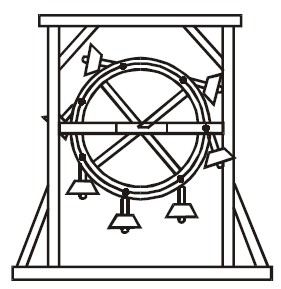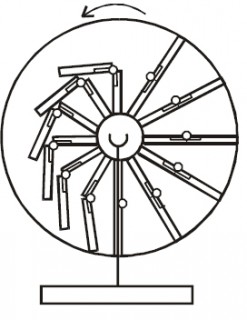Perpetual motion machine
The perpetual motion machine is a mechanism that can generate energy forever, without the help of others. Many talented people wanted to come up with this mechanism, but it did not work out and in 1887 Max Planck put an end to his work The Principle of Conservation of Energy, although they also talked about this before him.
I still want to tell you about the three inventors (they could have been more), who tried to create a perpetual motion machine.
The first is the Indian Bhaskara. The idea was this: the mechanism (wheel) was to consist of tubes containing heavy liquid (mercury), fixed at a certain angle and radius. He thought that when flowing in the tubes should create an asymmetry in the distribution of goods, which provided perpetual rotation.

The second was no less talented. The Frenchman Villars d'Onnecourt, his wheel was similar to the previous one, but he relied on the odd number of goods on the wheel, but there was also a failure.

And the last one is Leonardo da Vinci himself! His mechanism consisted of reclining loads.

At that time, people did not know about the “law of conservation of energy” and did not understand why their engines did not work.
I still want to tell you about the three inventors (they could have been more), who tried to create a perpetual motion machine.
The first is the Indian Bhaskara. The idea was this: the mechanism (wheel) was to consist of tubes containing heavy liquid (mercury), fixed at a certain angle and radius. He thought that when flowing in the tubes should create an asymmetry in the distribution of goods, which provided perpetual rotation.

The second was no less talented. The Frenchman Villars d'Onnecourt, his wheel was similar to the previous one, but he relied on the odd number of goods on the wheel, but there was also a failure.

And the last one is Leonardo da Vinci himself! His mechanism consisted of reclining loads.

At that time, people did not know about the “law of conservation of energy” and did not understand why their engines did not work.
')
Source: https://habr.com/ru/post/70245/
All Articles